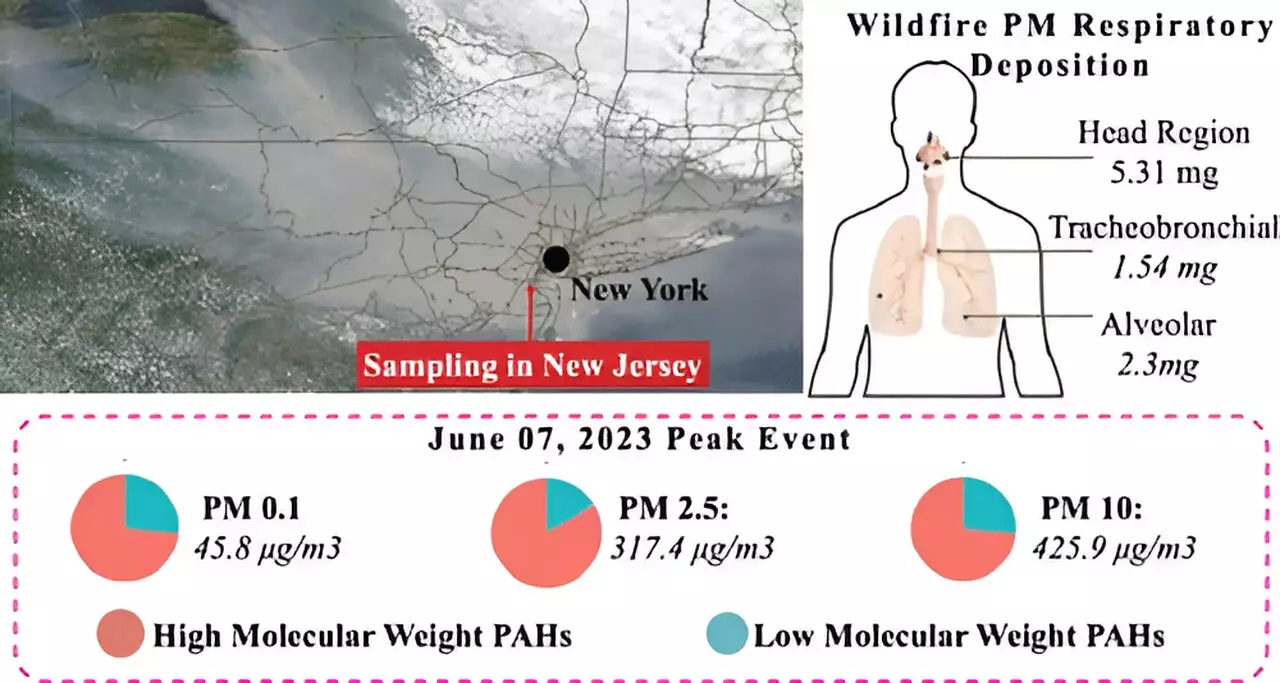In June 2023, a significant wildfire incident sparked health advisories for over 100 million inhabitants across the Northeastern United States, casting a stark light on the concerning interplay between climate change, wildfires, and air quality. Researchers from Rutgers University have meticulously studied the particulate matter generated by this wildfire, uncovering alarming insights into how such events can adversely affect air quality, particularly in densely populated areas like New Jersey and New York City. The research highlights the urgent need to comprehend the ramifications of climate-induced fires on public health.
Particulate matter (PM) is a noxious environmental element that has been increasingly recognized as a major contributor to various health issues globally. According to the World Health Organization, PM exposure is linked to detrimental effects, ranging from respiratory ailments to cardiovascular diseases. The Rutgers study, detailed in the journal Environmental Science & Technology, elaborated on the specific physical and chemical properties of particulate matter arising from this June wildfire, identifying the hazards associated with its composition.
Lead author Jose Guillermo “Memo” Cedeño Laurent underscored the significance of their findings, indicating that the emergent wildfire pollution is rapidly negating the past improvements in air quality achieved over the last decade in the U.S. These observations highlight a paradigm shift wherein climate change is increasingly exacerbating air quality issues, thereby challenging public health advancements.
The research team conducted advanced analyses revealing significant concentrations of high molecular weight polycyclic aromatic hydrocarbons (PAHs) in the particulate matter generated by the fire. PAHs are notorious for their carcinogenic properties, introducing a considerable threat to health, particularly amidst the higher concentrations observed during the peak of the wildfire on June 7.
The study found an astonishing escalation in ultrafine and fine particulate matter levels, reaching nearly tenfold higher than national air quality standards. Such substantial concentrations have far-reaching implications, notably concerning the ability of these minute particles to infiltrate the lungs, resulting in potential adverse health outcomes—an assertion corroborated by recent epidemiological studies indicating increased respiratory and cardiovascular-related emergency visits in New York City.
While the initial study quantified the quantity of harmful particulate matter, it also set the groundwork for further investigations into the health impacts stemming from these climate-driven wildfires. Cedeño Laurent and his team are collaborating with several researchers across prestigious institutions to delve deeper into how wildfire smoke influences various bodily systems, including the heart, lungs, brain, and reproductive health. This multidisciplinary approach signifies a critical pivot in understanding not only the immediate effects of exposure but the longer-term health ramifications that may arise as climate change continues to fuel wildfire incidents.
The implications of these findings are profound, shedding light on the urgent need for public health policies to adapt to the increases in wildfire-related pollution. The availability of robust data allows for a better evaluation of risk and the crafting of strategies to safeguard communities, particularly in areas that are already grappling with air quality concerns.
Cedeño Laurent’s commitment to advancing our understanding of wildfire smoke’s effects represents a valuable contribution to the ongoing discourse around climate change and public health. The researchers are also working on complementary studies aimed at exploring the changing composition of particulate matter, with particular focus on how these pollutants may affect the Earth’s temperature and contribute to further climatic shifts in urban environments.
As these studies unfold, it is pivotal that public health assessors and policymakers take note of the intricate relationships between climate phenomena and air quality degradation. Adequate responses, informed by scientific inquiry, will be essential in combating the rising tide of wildfire occurrences and associated health risks.
The Rutgers study serves as a sobering reminder of the substantial health dangers posed by climate-driven wildfires. As we navigate a world increasingly affected by climate change, understanding the nuances of wildfire pollution and its repercussions on human health is more crucial than ever. It compels us as a society to prioritize environmental stewardship and health protection, paving the way for a safer, healthier future.


Leave a Reply